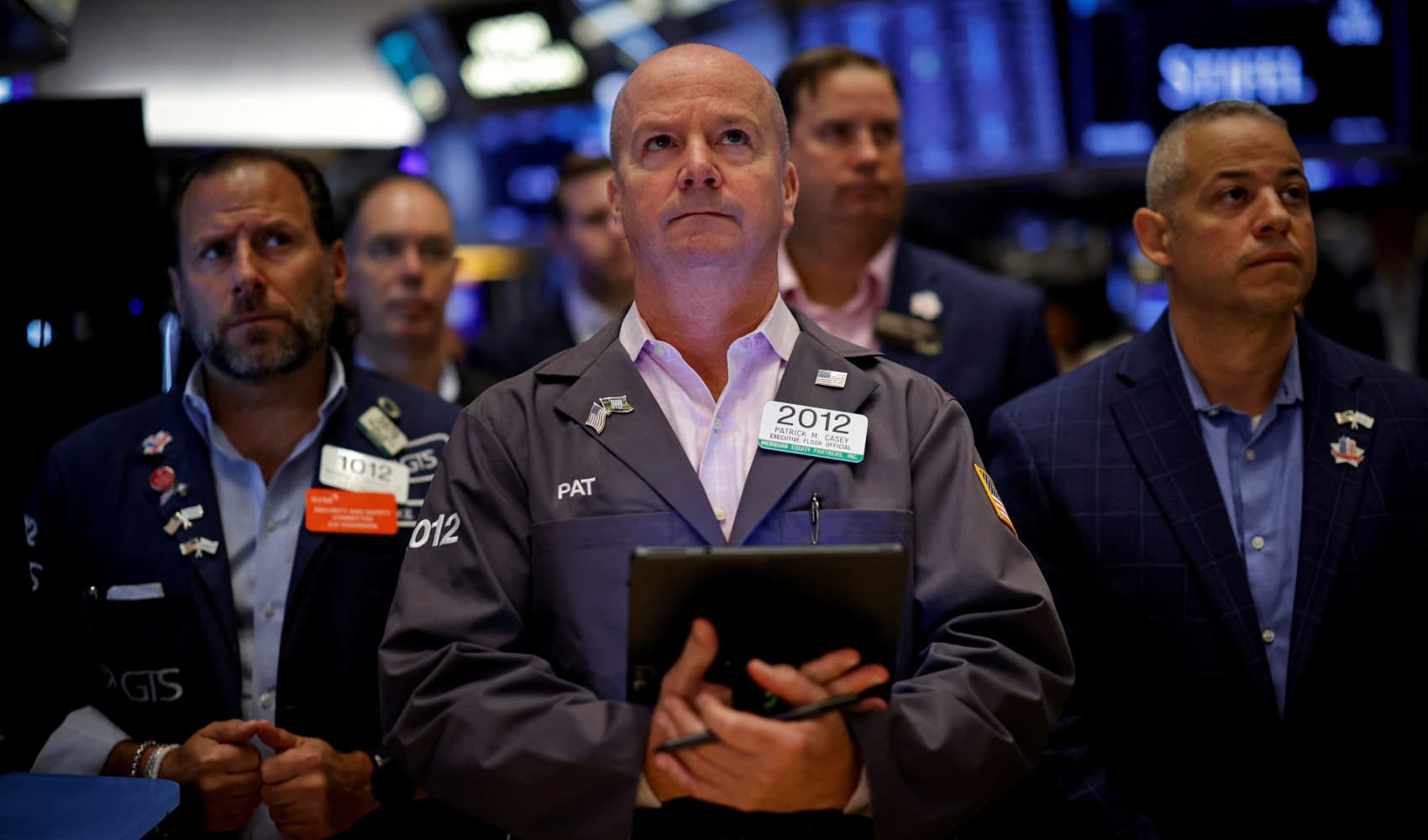
This report is from today's CNBC Daily Open, our international markets newsletter. CNBC Daily Open brings investors up to speed on everything they need to know, no matter where they are. Like what you see? You can subscribe here.
What you need to know today
Second-day drop
On Wednesday, the S&P 500 and Nasdaq Composite fell for a second day, but the Dow Jones Industrial Average managed to buck the trend with a slight rise. The pan-European Stoxx 600 index closed around 1% lower, tracking losses on Wall Street and in Asia-Pacific markets. Technology stocks were the hardest hit, losing 3.2%.
A jolting number
Job openings in the U.S. fell to 7.67 million in July, 237,000 fewer than June's number, which was revised downwards. It's not only lower than the expected 8.1 million, it's also the lowest level since January 2021. Even though job data look weak, there are still around 1.1 open jobs per available worker.
Get top local stories in San Diego delivered to you every morning. Sign up for NBC San Diego's News Headlines newsletter.
Ready to lower rates
A 2% inflation reading has been the U.S. Federal Reserve's target, but it seems the central bank is now turning its attention to the jobs market. Atlanta Federal Reserve President Raphael Bostic – who is known to be hawkish, that is, in favor of higher rates – said he's ready to lower rates even though inflation's still slightly higher than 2%.
Inverted curve briefly reverted
When the 10-year Treasury yield is lower than the 2-year yield, we have an inverted yield curve, which has predicted most recessions since World War II. The current curve inverted in July 2022, but normalized briefly Wednesday. Don't get too comfortable, though: The curve usually reverts before a recession hits.
[PRO] Loud recession crowd
Analysts and market watchers have been anticipating a recession in the U.S. economy for years. It hasn't happened yet. In fact, the inverse is true: The U.S. economy's been so resilient that it's seen as an outlier among advanced economies. But the recession crowd has once again seized the market narrative, writes CNBC Pro's Bob Pisani.
Money Report
The bottom line
Markets are confused. Investors want rate cuts because they are a tailwind for markets. But rate cuts tend to be driven by negative economic data. This leads to a confusing scenario in which "bad news is good news but maybe the bad news is so bad it could just be bad?"
This confusion is because the U.S. Federal Reserve has a dual mandate, which often conflicts with each other: to preserve price stability and maximize employment. Now that inflation seems to be cooling, the Fed's turning its focus to the jobs market.
True, inflation's still higher than the Fed's 2% target. But Atlanta Fed President Raphael Bostic acknowledged the central bank "cannot wait until inflation has actually fallen all the way to 2 percent to begin removing restriction because that would risk labor market disruptions that could inflict unnecessary pain."
Bostic's comments were released around the same time as the disappointing JOLTS survey, giving his comments extra weight. Bostic also acknowledged that "the data and our grassroots feedback describe an economy and labor market losing momentum."
In the face of the JOLTS report and Bostic's comments, traders now think there's a 45% chance a 50-basis-point cut is on the table for the Fed's September meeting, according to CME FedWatch. That percentage was 38% just a week ago.
That hope might have halted more serious losses for major indexes. In fact, markets were mixed, reflecting the confused environment. The S&P slipped 0.16% but the Dow ticked up 0.09%.
And while the Nasdaq lost 0.3%, dragged down by Nvidia's loss of 1.66% (though the chipmaker denied reports that it's received a subpoena), other technology and chip stocks recovered losses from the previous session. For instance, Advanced Micro Devices gained 2.87% and Tesla shot up more than 4%.
If you haven't seen the meme already, Google "kombucha girl," or Brittany Broski. Her expression on trying kombucha for the first time rapidly cycles between disgust and pleasure. That could be the face of markets now.
– CNBC's Jeff Cox, Sarah Min and Samantha Subin contributed to this report.






